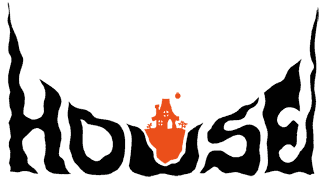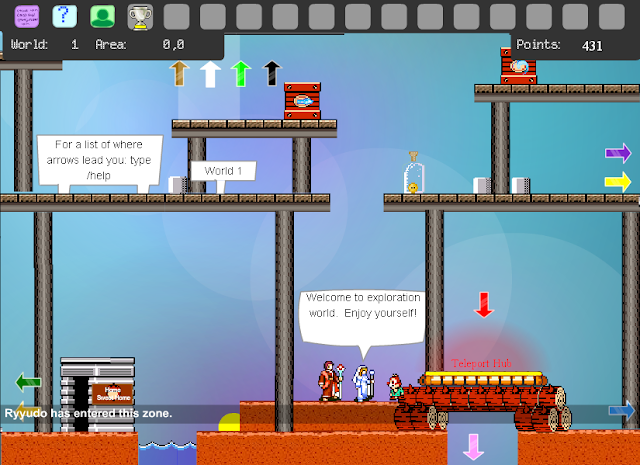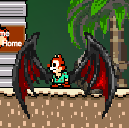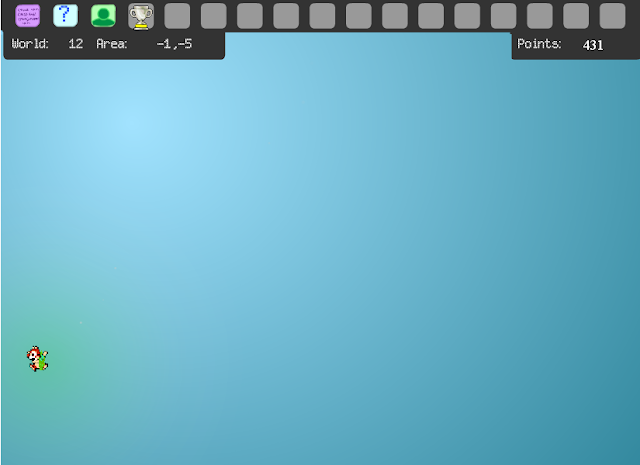After a slightly spur of the moment decision, I decided to ask some friends of mine to contribute to this blog. First up is Jamaal Graves, whose anecdote of forgotten viral videos spiraled out of control, taking him on a journey into the heart of madness itself. Enjoy!
Ch-Ch-Ch-Chip 'n Dales! With Extreme PvP!
You might be wondering why I'm quoting an
old as hell flash movie. And if you're not, well... you should be! That video is why I'm writing this blog post. It's why I spent a day seeking adventure, seeing new worlds and new things with my buddy Tim, who accompanied me on this epic quest.
It all started yesterday (Friday) night when I remembered the old flash video "Chip 'n Dales M.M.O.R.P.G." Wanting to re-live the amusement of the song and video, I Google'd it up. Of course, it was my first find. The same one uploaded on
AlbinoBlackSheep.
Old School.
But what's this site Google searched up right below the flash video? No... you have to be kidding me!
"Chip and Dales" is one thing that can be taken the wrong way if found in your search history.
AN ACTUAL CHIP 'N DALES MMORPG
I admit, my curiosity spilled over like a boiling pot of soup. I
had to see what this was about. I couldn't
ASK questions, I just had to jump right in! But I knew I couldn't do this alone. I had to have someone with me, someone to experience what I experienced, so that others would believe what we saw.
My buddy Tim happened to be on, and therefore, I invited him to join me for some Chip 'n Dale chipmunk-y fun. The date was set: Saturday morning.
We register, select our characters (which actually spans over many characters, not just the chipmunk duo), and log in. There's no client to download; only a flash to load. Who knew what to expect at this point besides platforming madness? We go through the, deceptively, easygoing Tutorial. At least it doesn't seem too shabby... for a Flash game, at least.
Tim and I meet up outside the tutorial. I'm Dale, but only because you gotta unlock Chip. =/ Furthermore, the names between Chip and Dale are reversed in this game. Great editing fellas! Tim picks Kirby, one of his all-time favorite characters. There seems to be no difference in the characters' abilities, only the sprites themselves, with Dale getting his sprite from the NES C'nD game, and Kirby getting the one from Kirby Super Star. All right. On the first screen, we are given about, literally, 12 different options as to where to go, at least according to the arrows.
With no direct suggestion from the game itself at all, outside of a sign we both fail to read, we decide to go left.
We get a jet pack in the form of giant demon wings and we're off to fly across this ledge... kinda. My wings fail me at first flap as I launch myself off the cliff, expecting to fly like an eagle. Instead, I plummet at the horrible frame rate this game runs at, and I die instantly by pitfall. Tim gets a pretty good laugh as I try again, successfully making it across.
We find a portal and activate it. After a 5 second countdown we're teleported to the Jungle.... which is apparently World 12?
We go right, and we're given a choice between holes to fall in. My gamer instinct kicks in and I know it's the hole that's farther away. I'm sure Tim knew too, but he missed the jump and landed in the first hole, dying, and now giving
me a good laugh. On the next screen, we are now in a pool of what seems to be
LCL.
What if that's NOT LCL?
We continue right, now in some "random shapes" zone, for lack of better way of explaining it. Each of the (seemingly randomly picked) yellow shapes, which look like they were made by some kid in MSPaint, is a spring. You jump on them, they make the "BOING" noise from Super Mario World, used mostly by the football enemies, and you go bouncing up... I wish I could say I was kidding.
Assuming down means death, like in most platformers, we clumsily bounce our way up to the top of the screen where the crates are. These crates are power-ups; weapons to use against enemies. I figure we'll need them, meaning there must be enemies going forward. With trying to go down seeming like a bad option, we just make a wild jump to the left. This leads to Purgatory.
There're no enemies, no platforms, no nothing. All you got is yourself, massive
DI and nowhere to go while you fall for about 10 seconds. Doesn't matter if you go left or right with that super DI. There's nothing there but wait until you eventually die. The game returns you back to your last save point after death: in this case, the little tree hut at the beginning of the jungle.
Well fuck going right, we're gonna go left! We're greeted with four platforms. One higher than the next, going left. Well we can totally make that. I mean, seriously, look at the maximum jumping height, and the height of the platform!
I can totally make that, right?
FUCK!
Tim also jumps, but no such luck. Also, the game announces to, what I assume is, the whole playerbase when someone dies. At the very least, everyone in the same world gets to see you fail constantly.
At this point, we're just Mexican Jumping Beans, popping up as much as we possibly can, but accomplishing nothing but minimal heights, spamming ourselves with "Ryyudo has died!" and "Timotee has died!"
Tim makes it to the first platform and waits for me. I falter and fail many a time. Tim then goes for the third, and fourth, making it just fine (screw you Tim). He mentions that a running start somehow gives you a few pixels more height of jump, or something. So I get some running start, and these jumps are
still out of my reach.
I finally make it to the second platform, only to die while trying to get up to the 3rd. Fuck! After about a good 5 minutes of error after error, I make it up to the last platform, and the next area.
I died this much AFTER getting a knack for the game and going back to take pictures for this entry.
There's a tractor beam heading upward, and some arbitrary enemies below the platform we're on. I jump and get beamed up. Tim, on the other hand, decides to pass it up, or maybe missed his jump since the game doesn't track other players' movement very well. Either way, Tim heads downward. He then dies trying to get back up on top (I assume), since I only see the message from where I'm at. Tim has to go back to
before the crazy high jumps. So I wait for him in the most dismal place so far. Ganond
arf's Castle.
Ganondarf is probably a pretty nice guy.
I assume it was an intentional typo... right? Tim makes it to the entrance of Ganondarf's Castle. We save in the house save point and begin to make our way up the tower by heading left.
The jumps on the first screen are pretty easy, and we climb up the tower with ease. But we get to the second screen, and the 3rd jump on the screen is out of reach. No matter how much of a running start we get (or anything else, for that matter) we can't make this jump!
Actually, after I took this picture, I somehow managed to clip my guy up there for a split second.
Then I get an idea! Tim had killed me earlier by lifting me up and throwing me into a pit (fucker) and I figured, if I lift Tim up, I can throw him up top to the platform. Now we're thinking with portals!
Tim gets on that platform. From there he's able to make the next two jumps, then jumps up to the next map and dies almost instantly to a monster up there. We do this a few more times before Tim tosses me up to let me try. I then get another weird idea: I try to grab Tim while he jumps on top of the 2nd platform, which works! Now we're both up on these platforms!
At this point, some other guy in the game (and from what it seemed, the only other guy in the game, at the time.) Started talking to us, though he's in a different world. He seems like he's 13 or 14, speaking with extreme emotes @_@ <_< r_r (I dunno what that last one is supposed to be, but he used it) and "cutesy" words, like 'bish' and 'plz.'
He asks us to invite him to where we are. We do, and he makes it up to where we are with extreme ease. He's some kind of Pokemon (my Poke-knowledge is rusty,) and has like 10 jumps or something. Tim and I semi-ignore him and continue ascending the tower at our own pace, and I finally make it up top next. Then this guy jumps up, kidnaps me, and throws me into a monster. Obviously, I die. His goal becomes all too apparent: To sabotage and grief us as annoyingly (and as much) as possible.
So without any sort of sarcasm, bias, or anything, we can officially say that 1/3rd of the game's population are
DICKS.
This guy flies/jumps away, types '*grabs sword*' and flies back to the screen Tim and I are still struggling with. The sword swings around his Pokemon like he was Mewtwo from Super Smash Bros. Melee, circling about him in some kind of unwieldy manner, stunning us every time we get hit with it (although while stunned, you can STILL pick up other players.) We're barely able to progress as this kid sits on top of the topmost platform saying "bring it on bish <_<"
Tim and I decide via Google Talk that we need to go to a different world. We warp away using a "/home" command that brings you back to the beginning of the game. The kid, on the other hand, still taunting us to come up "if we dare..." I say something to along the lines of "Do it!", although it's directed at Tim. The kid apparently takes that as a challenge, as his taunts continued.
Hoo hoo hoo!
This time around, we go right from the very first screen. We pass the first screen with ease and reach the second screen, where there's a random boss by the name of Gargantio.
Tim gracefully jumps over the boss, whereas I gracefully put my furry nuts on the boss's face and die because of it. Tim jumps up to the top, and then jumps left onto of the logs, grabs the crate of acorns (what?) jumps back down, and defeats the boss like a complete badass. I grab the trophy the boss drops, which was rightfully Tim's, and we make our way right to the next screen. Another teleporter, another 5 second countdown, and we're in some sort of beach land. World 11 now...
We jump over Bomberman (he's an enemy for whatever reason,) and make our way through random stuff, jumping over some more Bombermans and finally arriving at another save point that's UNDER THA' SEA! Although the way
I made it there was through a weird glitch where I fell into the water while standing on a piece of dry land. There was a random save point where I landed, even though it didn't seem like I was supposed to be there...
I was able to get back down there. Honestly, all the land-pillars weren't down here earlier today. They completely revamped this world, for the better, throughout the day. Also, it seems OTHER people are playing this game. Seriously?
Tim and I meet up at the next save point, and continue right. The next part was... a strange test of physics and patience. Mostly patience as there seemed to be little physics to be found.
Earlier today, the grey blocks weren't there. They were just randomly floating yellow balls.
I could not,
for the fucking life of me, figure out the physics (assuming there's any) behind these yellow bouncers. And neither could Tim. We bounced and bounced but the 4th one always fucked us over. We couldn't get enough height on a consistent basis to turn and make it to the 5th circle. I made it once.
ONCE! And died from a random enemy when I reached the top and headed into the next screen.
Finally, Tim messages me on Gtalk:
Tim:no, this game sucks
Jamaal: Hilariously bad
Tim:I'm not gonna pretend it doesn't anymore
Bless Tim for his strength of mind. We stopped soon after, our mentalities unable to take any more abuse at the hands of this pre-alpha test game. The game has constant advertisements telling you to join the discussion on the board, and to add this game to your favorites if you enjoy it. Tim and I both agreed:
There is NOTHING to enjoy here.
We'll just stick to the Flash Video, thanks. A minute long, and 20 times the entertainment.



























